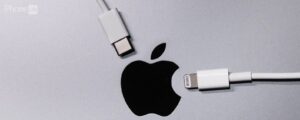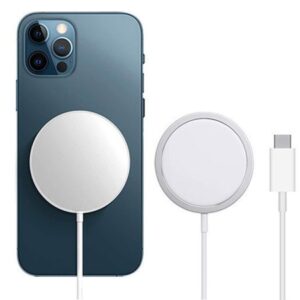Is your iPad battery draining faster than you can keep up? You’re not alone. Many iPad users have been left wondering why their device seems to have a never-ending need for charging. The good news is that there are reasons why this might be happening, and even better, solutions to help extend your iPad’s battery life. So, why does the iPad battery drain so fast? Let’s delve into the possible culprits and find out how you can get the most out of your device without constantly scrambling for a charger. Stay tuned!
Why Does iPad Battery Drain So Fast?
Are you frustrated with your iPad’s battery life? Do you find yourself constantly charging your device or running out of battery when you need it most? If so, you’re not alone. Many iPad users experience fast battery drain, and understanding the reasons behind it can help you optimize your device’s battery life. In this article, we will explore the various factors that contribute to the rapid battery drain on iPads and provide you with practical solutions to extend your battery’s longevity.
1. Display and Brightness Settings
One of the primary culprits of iPad battery drain is the display and brightness settings. The iPad’s high-resolution screen is a power-hungry component, and keeping the brightness level at its maximum can significantly impact battery life. Here are a few tips to optimize your display settings:
- Lower your screen brightness when indoors or in dimly lit environments.
- Enable the Auto-Brightness feature to automatically adjust the screen brightness based on ambient lighting conditions.
- Consider reducing the screen timeout duration to a shorter period to ensure it turns off more quickly when not in use.
By implementing these simple adjustments, you can conserve your iPad’s battery power without compromising your viewing experience.
2. Background App Refresh
Background App Refresh is a feature that allows apps to update their content even when they are not actively being used. While this feature enhances the user experience by providing up-to-date information, it can also drain your battery faster. Here’s how you can manage Background App Refresh:
- Go to Settings and select General.
- Tap on Background App Refresh.
- Select either Off or choose specific apps that you want to allow for background refresh.
By disabling Background App Refresh or limiting it to essential apps only, you can conserve battery life and prevent unnecessary power consumption.
3. Location Services
Location Services on your iPad enables apps to access your device’s GPS and use your location for various purposes. While this feature can be useful, it can also drain your battery faster. To manage Location Services:
- Go to Settings and select Privacy.
- Tap on Location Services.
- You can either disable Location Services entirely or individually manage which apps can access your location.
Consider disabling Location Services for apps that you do not frequently use or those that do not require your precise location. This adjustment can help prolong your iPad’s battery life.
4. Push Email
If you use the built-in Mail app or any other email client that supports push email, it means your device is constantly checking for new messages in real-time. While convenient, push email can drain your battery quickly. To optimize your email settings:
- Go to Settings and select Mail.
- Tap on Accounts and choose Fetch New Data.
- Disable Push and set the Fetch schedule to a less frequent interval, such as every 15 minutes or manually.
By switching to a fetch-based email retrieval system instead of push, you can reduce the frequency of email updates and extend your iPad’s battery life.
5. App Background Refresh
Similar to Background App Refresh, some individual apps have their own background refresh settings. These settings allow apps to update their content even when they are not actively running. While it provides a seamless experience, it can consume a significant amount of battery power. To manage app-specific background refresh:
- Go to Settings and select the specific app.
- Look for a Background Refresh or Background App Refresh option.
- Disable the feature or select a more conservative option, such as Wi-Fi only.
By selectively controlling app background refresh settings, you can conserve battery life while still enjoying the app’s functionality when you need it.
6. Resource-Intensive Apps and Features
Some apps and features on your iPad are inherently more resource-intensive than others, leading to increased battery consumption. Here are a few notable examples:
- Video streaming apps: Apps like Netflix, YouTube, or Hulu that continuously stream videos can quickly drain your battery. Limit your usage or download videos for offline viewing.
- Graphics-intensive games: Games with sophisticated graphics and animations put a heavy load on the CPU and GPU, resulting in accelerated battery drain. Play these games in moderation or explore less demanding alternatives.
- Virtual Assistants: Voice-activated virtual assistants like Siri, while highly useful, require constant microphone access and processing. Minimize excessive usage to conserve battery life.
Being mindful of resource-intensive apps and features can help you make informed decisions about their usage and ultimately preserve your iPad’s battery capacity.
7. Software Updates
Apple regularly releases software updates for the iPad, which often include performance improvements and bug fixes. However, it is not uncommon for software updates to introduce new bugs or inefficiencies. If you notice a sudden decline in your battery life after updating your iPad’s software, there may be an underlying issue. In such cases:
- Check for any available software updates following these steps: Go to Settings, select General, and tap on Software Update.
- If an update is available, install it to ensure you have the latest bug fixes and performance enhancements.
- If the issue persists, consider reaching out to Apple Support for further assistance.
Updating your iPad’s software can potentially resolve battery drain issues caused by software bugs.
8. Battery Health and Aging
Over time, the battery in your iPad will naturally degrade and experience a reduction in its capacity to hold a charge. This is a normal part of the aging process for any lithium-ion battery. To assess your iPad’s battery health:
- Go to Settings and select Battery.
- Tap on Battery Health.
- If your battery’s maximum capacity is significantly below 100%, it may be worthwhile to have the battery replaced by an authorized service provider.
If your iPad is older and you notice a significant decline in battery life, consider replacing the battery to restore its performance and longevity.
iPad battery drain can be frustrating, but by understanding the factors that contribute to it, you can take proactive measures to optimize your device’s battery life. From adjusting display settings and managing background activities to controlling resource-intensive apps and considering software updates, there are various strategies you can employ to extend your iPad’s battery longevity. Remember to periodically assess your battery health and consult with authorized service providers if necessary. By implementing these practices, you can enjoy longer-lasting battery performance on your iPad.
Frequently Asked Questions
Why does my iPad battery drain so fast?
There can be several reasons why your iPad battery drains quickly. Here are some possible causes:
How can I improve my iPad’s battery life?
To improve your iPad’s battery life, you can try the following tips:
Does the screen brightness affect my iPad’s battery life?
Yes, the screen brightness can have a significant impact on your iPad’s battery life. Keeping the brightness level lower can help conserve battery power.
Can background app refresh drain my iPad’s battery?
Yes, background app refresh can contribute to battery drain on your iPad. It allows apps to refresh their content even when you’re not actively using them, using up valuable battery power. Disabling background app refresh for certain apps can help prolong battery life.
Does using Wi-Fi or cellular data impact my iPad’s battery life?
Using Wi-Fi or cellular data on your iPad does consume battery power, especially when you’re actively browsing the internet or streaming media. If you’re concerned about battery drain, consider using Wi-Fi whenever possible and limiting data-heavy activities.
Is it normal for my iPad’s battery to degrade over time?
Yes, it is normal for your iPad’s battery to degrade over time. Lithium-ion batteries, like the ones used in iPads, gradually lose their capacity to hold a charge. If you notice a significant decrease in battery life, it might be time to consider getting the battery replaced.
Final Thoughts
The iPad battery draining quickly can be attributed to several factors. One common reason is excessive app usage, particularly resource-intensive apps or those running in the background. Another factor is screen brightness, with higher settings consuming more power. Additionally, enabling push email and notifications can contribute to rapid battery drain. Other culprits include frequent location tracking and background refresh. By optimizing app usage, adjusting screen brightness, and managing notifications, users can alleviate the issue of why does iPad battery drain so fast. Applying these simple steps can help extend the battery life and enhance the overall user experience.



